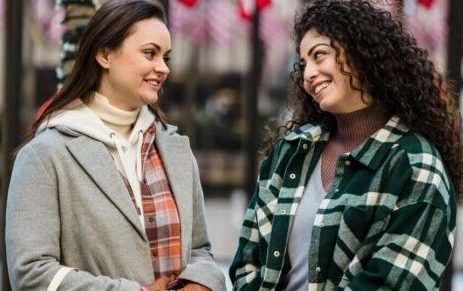Fashion Choices in America: A Diverse and Ever-Evolving Landscape
Fashion in America is as diverse as the country, reflecting a blend of cultures, traditions, and personal styles. From the bustling streets of New York City to the laid-back vibes of Los Angeles, fashion choices in America are a fascinating mix of trends, classics, and innovations. This blog post explores the key elements that shape fashion choices in America and how they vary across regions, age groups, and social backgrounds.
Historical Influences on American Fashion
The history of American fashion is a journey through time, marked by significant cultural shifts and global influences. In the early 20th century, European designers, particularly those from Paris, heavily influenced American fashion. However, the U.S. began developing its distinct fashion identity as the century progressed.
The 1920s, known as the Roaring Twenties, was a significant change in American fashion. Flapper dresses, characterized by their loose fit and shorter hemlines, became symbols of the era’s social liberation. This decade also saw the rise of American designers like Coco Chanel, who introduced more practical yet stylish clothing for women.
The post-World War II era brought a wave of prosperity and a new focus on glamour and luxury in fashion. Tailored suits, elegant dresses, and the iconic styles of Hollywood stars like Marilyn Monroe and Audrey Hepburn defined the 1950s. During this time, American fashion began to break away from European influence, with designers like Claire McCardell pioneering the American sportswear movement, emphasizing practicality and comfort.
The 1960s and 1970s saw further diversification in American fashion with the rise of counterculture movements. The hippie movement brought a bohemian, free-spirited aesthetic characterized by bell-bottom jeans, tie-dye shirts, and fringe. The 1970s also saw the emergence of disco fashion, with its flashy, glamorous styles.
In the 1980s, American fashion became synonymous with power dressing, reflecting the decade’s economic boom. Women entered the workforce more significantly, and the power suit symbolised female empowerment. Bold colours, oversized silhouettes, and exaggerated accessories defined the fashion of this era.
The Role of American Designers
American designers have played a pivotal role in shaping the global fashion landscape. Some of the most iconic names in fashion history hail from the United States, including Ralph Lauren, Calvin Klein, Donna Karan, and Michael Kors. These designers have not only created timeless pieces but have also set trends that resonate worldwide.
Ralph Lauren, for instance, is known for its classic American style, blending preppy aesthetics with a touch of luxury. His Polo brand has become synonymous with American fashion, representing a blend of sophistication and casual elegance.
Calvin Klein’s minimalist designs and provocative advertising campaigns revolutionised the fashion industry. His brand symbolised modernity and simplicity, focusing on clean lines and neutral colours.
Donna Karan, another influential designer, introduced the concept of “seven easy pieces,” which allowed women to mix and match wardrobe staples to create a versatile and chic look. This approach to fashion was both practical and stylish, reflecting the needs of modern women.
Michael Kors, known for his accessible luxury, has created a global brand that combines timeless elegance with contemporary trends. His designs are famous for their versatility and wearability, appealing to a broad audience.
The Influence of Culture and Diversity
One of the most distinctive features of American fashion is its cultural diversity. The U.S. is a melting pot of cultures, which is vividly reflected in the fashion choices of its people. In cities with large immigrant populations, such as New York, Chicago, and San Francisco, you can see a fusion of traditional attire with modern trends. For instance, it’s not uncommon to see a business professional pairing a tailored suit with a colorful scarf or accessory that nods to their cultural heritage.
Regional Variations in Fashion Choices in America
Fashion choices in America are also influenced by geography. In New York City, the fashion capital of the U.S., people often embrace high-end, designer labels and cutting-edge trends. The city’s fast-paced environment and status as a global hub for the fashion industry make it a place where fashion-forward choices are the norm.
On the West Coast, particularly in Los Angeles, fashion tends to be more relaxed and influenced by the warm climate. Casual, beach-inspired looks dominate, with brands like Vans, Levi’s, and Patagonia being popular choices. Hollywood’s influence also plays a significant role, with many adopting the latest celebrity trends.
In the Midwest and Southern states, fashion tends to be more conservative and practical. Here, you’ll find a preference for comfortable, durable clothing, often reflecting the region’s agricultural roots. However, even within these regions, urban centers like Chicago and Atlanta have unique fashion scenes that blend local culture with national trends.
Age and fashion choices in America
Fashion choices in America also vary widely across different age groups. Younger generations, particularly Gen Z and Millennials, are known for their bold fashion statements and willingness to experiment with new trends fashion choices in America. This group often embraces sustainable and ethical fashion, with a growing preference for thrift shopping and eco-friendly brands.
While often more conservative in their choices, older generations still influence the fashion landscape. The “power suit” for business professionals, timeless denim, and classic footwear like loafers and pumps are staples that have transcended generations.
The Impact of Social Media
In recent years, social media has become a powerful force in shaping fashion choices in America. Platforms like Instagram, TikTok, and Pinterest are where trends are born and spread at lightning speed. Influencers and celebrities play a significant role in popularizing new styles, making it easier for people to access and adopt global fashion trends.
The Future of American Fashion
As America continues to evolve, so too will its fashion choices in America . Sustainability is likely to play an even more significant role in the future, with consumers becoming more conscious of the environmental impact of their clothing. Additionally, we may see innovations such as wearable tech and virtual fashion experiences becoming mainstream as technology advances.
Conclusion
fashion choices in America dynamically reflect the country’s diversity, regional differences, and evolving social norms. Whether in the heart of New York City or a small town in the Midwest, fashion remains a powerful form of self-expression that continues to adapt and change with the times.


